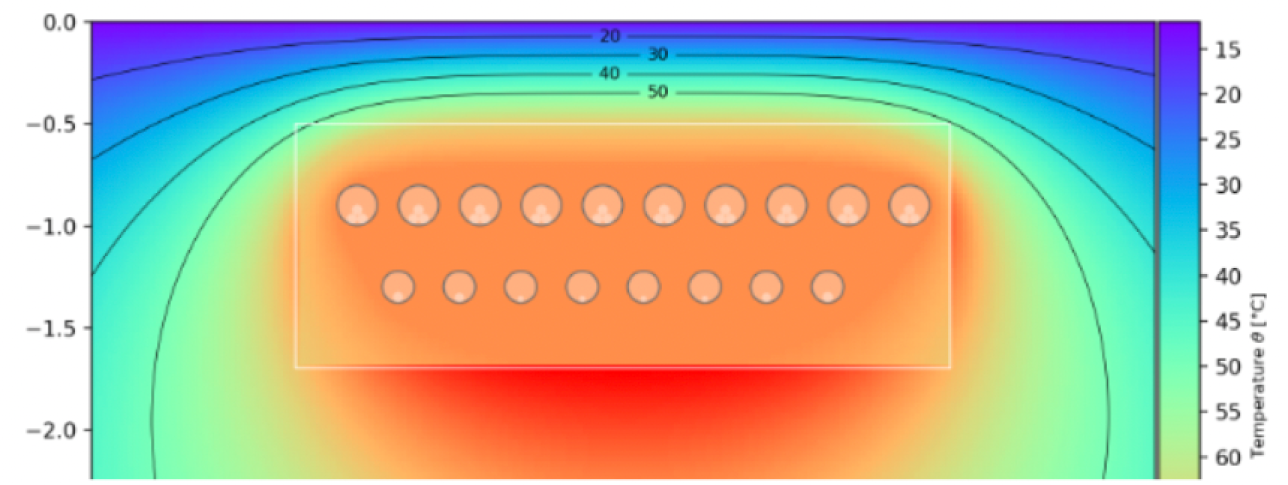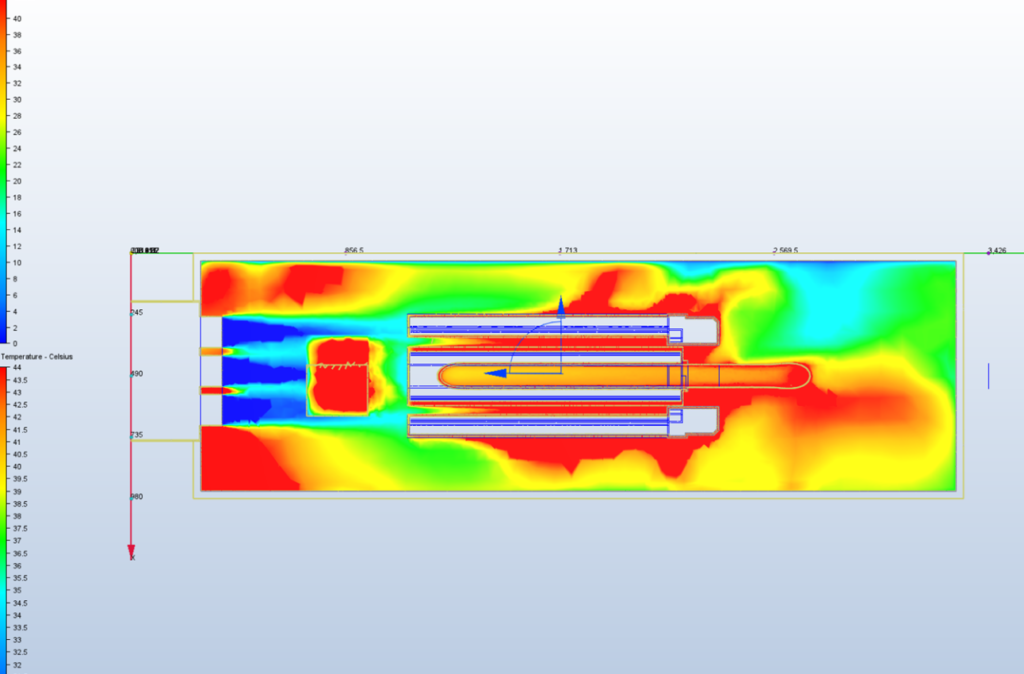Enhancing Cable Calculations and Electrical Fault Studies with Advanced Software: A Guide by Ampromech Consulting Engineers

Carrying out cable calculations is a fundamental task in the design process of any electrical installation project. These calculations determine the appropriate cable sizes based on load details, installation environments, and fault levels.
The Role of Advanced Cable Calculation Software
Advanced cable calculation software packages offer significant advantages over manual methods, especially in the case of
underground high voltage cables (either direct-buried, or in ducts). Several different formulae exist, depending on applicable
international standards to determine the ampacity (current carrying capability) of a buried cable.
Many installation factors affect the engineering constants used in these calculations, such as cable depth, underground
temperatures, type of backfill and soil (differing thermal resistivities affecting heat dissipation), size of ducts, grouping factors
and so on.
Integration of Digital Technologies:
A well-known method for determining the ampacity of underground cables is the “Neher McGrath” calculation.
J. H. Neher and M. H. McGrath were two electrical engineers who wrote a paper in 1957 about how to calculate the capacity of current (ampacity) of cables. The paper described two-dimensional highly symmetric simplified calculations which have formed the basis for many cable application guidelines and regulations. Complex geometries, or configurations that require three-dimensional analysis of heat flow, require more complex tools such as finite element analysis. Their article became used as reference for the ampacity in most of the standard tables.
This calculation has been developed over the years and can now be done utilising cable software. This is a very accurate and cost-effective method of ensuring that the buried cables are capable of operating at the desired load and are operating at a temperature that will not compromise their structure. This sustained over-heating can lead to failures and lengthy repair times.
An example of the simulation and modelling of a buried ductbank showing 15KV cables carrying almost 120MW of power can be seen below.

Engineering Software & Fault Studies
These software solutions also enable the creation of detailed electrical installation simulations, capturing all interacting factors that may affect the performance and safety of the electrical installation. Key features of these packages include:
- Comprehensive Fault Level Analysis: The software can track busbar fault levels, cable load carrying capacities, protection settings, and more, ensuring a holistic view of the installation [1][2].
- Improved Accuracy: Unlike standalone calculations, software models consider the entire system’s impedance levels, which helps identify potential fault conditions that may not be apparent when viewing cables and busbars in isolation [3][4].
- Enhanced Safety: These tools ensure that protective devices are selected accurately to comply with industry standards. For instance, simulations can predict arc flash energy levels, advising on the required personal protective equipment (PPE) for maintenance personnel [4][5].
- Design Flexibility: Engineers can explore a range of scenarios to optimize installation performance, such as different transformer sizes, busbar or cable feeders, and impedance levels. This flexibility allows for more efficient and reliable designs [3][4].
- Integrated Load Flow Analysis: Advanced software can simulate load flow and voltage drop across the installation, providing insights into how the system will perform under various conditions. This helps in planning and optimizing the distribution of electrical loads [1][2].
Practical Applications and Benefits
Data Centres: Ensuring efficient load distribution and minimizing energy losses are critical. Software tools help in designing and
optimizing cable layouts to handle high loads without overheating or excessive energy loss [2][3].
Industrial Plants: In environments with complex electrical networks, such as manufacturing plants, these tools enable precise calculations for motor starting, harmonic analysis, and short-circuit analysis, ensuring the safety and reliability of the installation [4][5].
Renewable Energy Projects: In solar or wind energy installations, accurate cable sizing and fault analysis are essential for the safe and efficient operation of the system. Advanced software provides the necessary tools to model these scenarios accurately [2][5].
Conclusion
References
- Electrical Installation Guide. “Worked example of cable calculation.” Retrieved from https://www.electrical-installation.org/enwiki/Worked_example_of_cable_calculation
- ETAP. “Power System Design Software | Low Voltage Power System Engineering Software.” Retrieved from https://etap.com/product/lv-power-system-design-software
- CIRED. “Fully automated calculations in both MV and LV networks.” Retrieved from https://www.cired.net/fully-automated-calculations-in-both-mv-and-lv-networks
- Trace Software. “LV installation electrical calculation software | elec calc™.” Retrieved from https://www.trace-software.com/products/elec-calc/
- Trace Software. “Power System Analysis.” Retrieved from https://www.trace-software.com/power-system-analysis/
ENGINEERING THE FUTURE
Related Blogs

- Data Centre, TECHNOLOGY

- Electrical Engineering

- TECHNOLOGY

- Regulations


